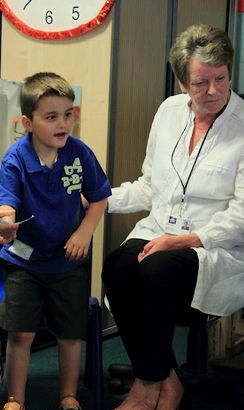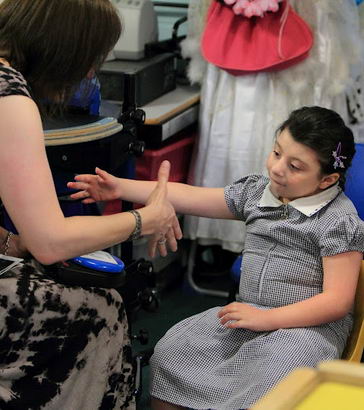
Obtaining the views of people with learning difficulties – even those with severe or profound intellectual
impairment – is becoming...imperative.
Felce, 2002
Carrying out research with children with SLD/PMLD/CLDD needs to move towards being participatory – 'research with' rather than 'research on' these young people (Lewis and Porter, 2007).
Article 12 of the United National Convention carries a commitment 'to the child who is capable of forming his or her own views, the right to express those views freely in all matters affecting the child, the views of the child being given due weight in accordance with the age and maturity of the child'.
Researchers must seek consent from guardians to engage children with SLD/PMLD/CLDD in research, but children too should decide whether or not to give assent. This should be based on a best possible informed understanding of their involvement using their preferred systems of communication.
For children with SLD/PMLD/CLDD, assent will be ongoing; for example, having and knowing
how to use a 'stop symbol' during interviews or being able to turn off the video camera during a
research session (Lewis and Porter, 2007).
Read another example of how assent was gained.

Research needs to move towards children's participation, so their voices are represented – not only as part of research reporting, but in the research agenda, designing, carrying out and sharing research outcomes (Byers et al, 2008; Lewis and Porter, 2007).
Supporting higher ability young people with learning disabilities/difficulties to make changes in schools through research, the 'What About Us?' project perspectives are important: 'Some of the changes were relatively minor but made a huge difference to the day-to-day life of the young people...their ideas were ones that adults may not have thought of' (Byers et al, 2007).
Visit the 'What About Us?' website: www.whataboutus.org.uk

Visit and explore the following resources in relation to the participation of children with SLD/PMLD/CLDD in research:
Video: 'Pupil voice in special schools'
Video: 'Involve me: communication'/Report: Involve Me (Mencap et al, 2011)
The eight key messages from the Involve Me project can apply not only to involving children with PMLD in decision-making, but also to involving all children with SLD/PMLD/CLDD in research. These are:
- Know the person really well.
- Take lots of time.
- Don't make assumptions.
- Be responsive to the person.
- Be creative and try out new ideas.
- Learn from what the person 'tells' you.
- Act on what you learn.
- Help the person recall and share things about their life.
(Mencap et al, 2011)
Each child needs to be confident that they will be listened to before they are willing to express their
opinions. Developing a culture of being listened to takes time, particularly with children with SEN as they are not only likely to need more processing time, but also in terms of learning together about developing
a culture of learning... Opinions need to be sought, valued, considered and an agreement reached which everyone can accept.
Bishton and Lindsay, 2011
There are many tools for ascertaining the views of people with disabilities... researchers should use
a range of techniques and be creative in the way they work... People with disabilities may not have one preferred method of
communication and benefit from a total communication approach.
Winstanley, 2010
Strategies for enabling the child's voice may include:
- Collaboration comics.
- Diamond ranking.
- Mencap's 'Listen Up' Project.
- Mencap's Trans-Active Project.
- Photography.
- Puppets.
- Talking Mats.
- Visual cues.
(Bishton and Lindsay, 2011; Winstanley, 2010)
See Winstanley (2010, p. 125) for an explanation of some of these.

Communication and behaviour (PMLD Network)
Whitehurst, T. (2007) Liberating silent voices – perspectives of children with profound and complex learning needs on inclusion, British Journal of Learning Disabilities, 35 (1), 55-61.
Click here for a list of additional references.